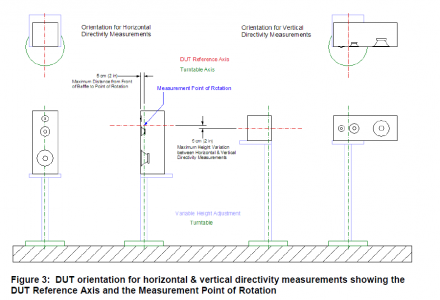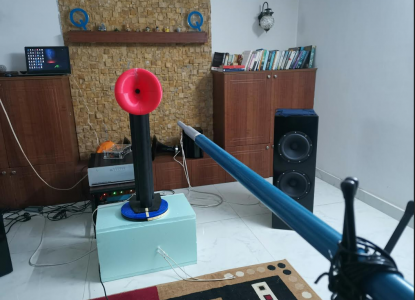siddharthdas
Active Member
@Vineethkumar01 recently published a bunch of specs on his DIY build - https://www.hifivision.com/threads/hello-from-a-speaker-builder.91412/post-1023234 - see bottom two measurements for dispersion.

You can see how angular horizontal deviation from the front of the speaker changes response. Around 50 Hz, dispersion is almost 360 degrees (see right diagram right hand axis), i.e. you can hear exactly what you hear in the front, all around the room (at the same distance from the speaker). At 20 khz, as you move away from the direct listening axis, the loudness drops: +/- 30 deg looks great, +/- 60 deg is -24 db, a significant drop. There's also a narrow neck between 200-500 Hz, which is probably the crossover point from bass to mid. While @Vineethkumar01 can tell us further about the actual details, just from the figure alone it appears that the directivity change from bass to upper bass is quite sharp, and somewhat uniform thereafter.
Gainphile has an amazing blog with all sorts of directivity plots. http://gainphile.blogspot.com/2010/11/s15-econowave-dsp.html - see how this speaker has excellent dispersion almost throughout the spectrum - courtesy of horn loading.
Taking these measurements is a bit of an art and I hope @Vineethkumar01 will be so kind as to tell us how he does them. Some still shots of him performing measurements would also be excellent (maybe some of us can get together and document the process with images). I personally thing it will be super helpful to the entire community. There's so much conversation around super subjective stuff. This side of the art needs some more engagement than we see. DiyAudio is great - although there too I'd love to see some simple how to guides. It's trickier than meets the eye to parse these forums form information - not to mention, very slow!!

You can see how angular horizontal deviation from the front of the speaker changes response. Around 50 Hz, dispersion is almost 360 degrees (see right diagram right hand axis), i.e. you can hear exactly what you hear in the front, all around the room (at the same distance from the speaker). At 20 khz, as you move away from the direct listening axis, the loudness drops: +/- 30 deg looks great, +/- 60 deg is -24 db, a significant drop. There's also a narrow neck between 200-500 Hz, which is probably the crossover point from bass to mid. While @Vineethkumar01 can tell us further about the actual details, just from the figure alone it appears that the directivity change from bass to upper bass is quite sharp, and somewhat uniform thereafter.
Gainphile has an amazing blog with all sorts of directivity plots. http://gainphile.blogspot.com/2010/11/s15-econowave-dsp.html - see how this speaker has excellent dispersion almost throughout the spectrum - courtesy of horn loading.
Taking these measurements is a bit of an art and I hope @Vineethkumar01 will be so kind as to tell us how he does them. Some still shots of him performing measurements would also be excellent (maybe some of us can get together and document the process with images). I personally thing it will be super helpful to the entire community. There's so much conversation around super subjective stuff. This side of the art needs some more engagement than we see. DiyAudio is great - although there too I'd love to see some simple how to guides. It's trickier than meets the eye to parse these forums form information - not to mention, very slow!!





